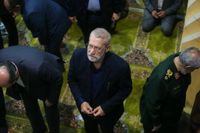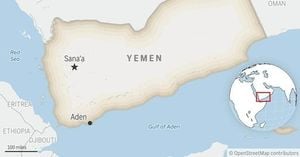On October 5 and 6, 2025, the already tense relationship between the United States and Iran entered another precarious phase, with threats, military posturing, and political recalibrations echoing across the globe. President Donald Trump, speaking at Naval Station Norfolk in Virginia during an event marking the US Navy’s 250th birthday, issued a stern warning to Iran: if Tehran restarts its nuclear program, the United States would not hesitate to strike again, and "we won’t wait so long this time." His message was clear, forceful, and left little room for misinterpretation.
Trump’s remarks referenced the dramatic events of June 22, 2025, when the US, in coordination with Israel, launched a series of airstrikes targeting Iran’s nuclear facilities. The operation, dubbed "Operation Midnight Hammer," saw B-2 stealth bombers and 30 Tomahawk missiles launched from submarines hit three critical Iranian sites: Fordow, Natanz, and Isfahan. Trump described the operation as "perfectly executed," emphasizing the precision and effectiveness of the US military’s advanced "bunker buster" bombs. "The B2s, what they did. Those beautiful flying wings, what they did, they hit every single target. And just in case, we shot 30 Tomahawks out of a submarine," he told the crowd of sailors, according to the Daily Caller and other outlets.
In his speech, Trump claimed that, prior to the strikes, Iran was "going to have a nuclear weapon within a month." He asserted, "And now they can start the operation all over again, but I hope they don’t because we’ll have to take care of that too if they do, I let them know that. You want to do that, it’s fine, but we’re going to take care of that and we’re not going to wait so long." However, US intelligence at the time had determined that Tehran was not actively pursuing a nuclear weapon and, even if it decided to, it would take years to develop a deliverable device. This discrepancy between Trump’s claims and intelligence assessments has drawn scrutiny from analysts and the media alike.
Trump also recounted that B-2 pilots had visited him in the Oval Office, revealing that the US military had been preparing for such a strike for 22 years, but that no president before him had been willing to authorize it. This narrative, according to Shafaq News and other sources, underscores the president’s portrayal of himself as uniquely resolute in confronting Iran’s nuclear ambitions. He further stated, “Look, nobody has done more for Israel than I have, including the recent attacks with Iran, wiping that thing out,” highlighting the close US-Israel coordination and his administration’s unwavering support for Israel’s security concerns.
Since the 12-day US-Israeli war on Iran, which ended with a ceasefire, Trump has repeatedly threatened to bomb Iran again if it restarts its nuclear program. The administration continues to demand that Iran abandon its nuclear enrichment activities and accept limits on its ballistic missile program—conditions Tehran has categorically rejected. Iranian officials, led by Supreme Leader Ayatollah Ali Khamenei, have made clear that while Iran prohibits the development of nuclear weapons, it will not relinquish its civilian nuclear program or accept constraints on its missile capabilities. Khamenei recently reaffirmed this stance, framing Iran’s nuclear enrichment as a matter of national pride and sovereignty.
While the rhetoric from Washington has grown sharper, Tehran’s internal politics have also undergone a significant shift. In August 2025, President Masoud Pezeshkian appointed Ali Larijani as Secretary of the Supreme National Security Council (SNSC), placing him at the helm of Iran’s most sensitive security and diplomatic portfolios. According to Shafaq News, Larijani’s return marks a strategic pivot from the more ideological brinkmanship of recent years toward a disciplined, pragmatic approach to both domestic and foreign policy.
Larijani is no stranger to Iran’s corridors of power. His career spans military service during the Iran-Iraq war, leadership in state media, and a pivotal role in nuclear diplomacy—including pushing the 2015 nuclear agreement through Iran’s parliament. Seen as a voice of "peace from a position of strength," Larijani advocates for sustaining Iran’s nuclear program and regional alliances while emphasizing diplomacy to avoid direct conflict. Since reassuming his post, he has worked to reset border security cooperation with Iraq and reaffirmed support for Hezbollah in Lebanon, all while promoting what analysts call "revolutionary realism": retaining influence without provoking full-scale war.
Supreme Leader Khamenei’s approval of Larijani’s appointment signals a desire for seasoned crisis management and strategic discipline at a time of heightened external pressure and internal strain. Larijani’s reappearance is widely interpreted as an effort to stabilize Iran’s domestic scene and recalibrate its international stance through quiet diplomacy and measured deterrence. “Diplomacy remains the most effective path to avoid conflict,” Larijani has said, even as he warns that Iran could reassess its participation in the Non-Proliferation Treaty if Western pressure intensifies.
Meanwhile, the information war continues to rage alongside the diplomatic and military standoffs. On October 6, 2025, social media users circulated a dramatic photo purporting to show a recent explosion at a fuel products warehouse in Tehran. The image, posted by an X account named "Israel News Pulse," quickly spread online, stoking fears of fresh violence in the Iranian capital. However, a fact-checking analysis by Misbar determined that the image was old and unrelated to any new incident, highlighting the persistent challenge of misinformation in times of crisis.
As the world watches, the stakes remain high. Trump’s threats of renewed military action, Iran’s strategic recalibrations under Larijani, and the ever-present risk of miscalculation or misinformation all contribute to an atmosphere of uncertainty. The international community is keenly aware that another round of conflict could have far-reaching consequences, not just for Iran and the US, but for the broader Middle East and beyond.
For now, the path forward is fraught with peril and possibility. The US demands for Iranian concessions remain unmet, while Tehran insists on its right to civilian nuclear technology and regional influence. With experienced hands like Larijani guiding Iran’s response and Trump doubling down on his hardline stance, the next moves by either side could shape the region’s future for years to come.
In the midst of these high-stakes maneuvers, one truth stands out: both sides are recalibrating, wary of open escalation but unwilling to back down from their core positions. Whether this tense standoff leads to renewed talks or another round of conflict remains to be seen, but the world is watching every step.




